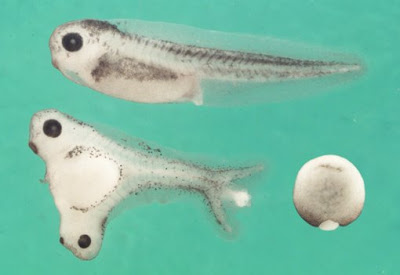Old fogies who grew up in the 1960s are constantly complaining that today's university students are different. Modern students are much more materialistic and much less concerned about the important things in life—or so they (we) think.
 I was reading The Happy Planet Index when I came across an interesting chart.
I was reading The Happy Planet Index when I came across an interesting chart. The chart shows the results of a survey of college students in the USA. They were asked to rate the importance of several goals including whether they wanted to become "very well-off financially" or whether they wanted to "develop a meaningful philosophy of life." Students who rated either (or both) of these choices as "very important" or "essential" were plotted by the year of the survey. The chart is shown below.

I can think of several problems with the data. The 60s were a special time, especially on college campuses. Everyone was an idealist and anti-materialism was very much in vogue. There really were students who wanted to spend the rest of their lives on communes in the countryside. Some of my friends are still there.
Those times are long gone and it's not reasonable to expect today's students to have the same attitudes because the culture is very different.
Another difference is that in the 60s most students didn't have to worry too much about money. As a general rule, they came from families who were well-off and when they graduated from college they were almost certain to get a good paying job if they wanted it.
As the participation rate increased and the economy went through ups and downs, more and more students came to college from a less financially secure background. They are rightly more concerned about having the minimum amount of wealth to be secure and happy.
But in one sense it doesn't really matter why today's students are more materialistic. It's a fact that professors have to cope with when teaching and designing courses. When you look at the chart it's not surprising that fewer students are interested in science careers or getting a Ph.D. in philosophy. It's not surprising that most of our biochemistry students want to be physicians, or dentists, or pharmacists.
One question remains. Should the old fogies continue to butt heads against the wall in order to try and change student aspirations? Should we just forget about our own values from the 60s and give up trying to explain why we thought they were worth pursuing back then, and are still worth pursuing today?
The whole point of the Happy Planet Index and the new economics foundation is to change attitudes and expectations. Their goal is to create a more sustainable lifestyle by convincing people to abandon the pursuit of wealth and material items.
In an age of uncertainty, society globally needs a new compass to set it on a path of real progress. The Happy Planet Index (HPI) provides that compass by measuring what truly matters to us - our well-being in terms of long, happy and meaningful lives - and what matters to the planet - our rate of resource consumption. The HPI brings them together in a unique form which captures the ecological efficiency with which we are achieving good lives.That sounds like something right out of the 60s. Those of us who were there have to recognize that we didn't succeed in changing society for the better in spite of our idealism. Are today's students going to do any better when they've even lost the idealism?
This report presents results from the second global HPI. It shows that we are still far from achieving sustainable well-being, and puts forward a vision of what we need to do to get there.
The current economic and ecological crises have discredited the dogmas of the last 30 years. The unwavering pursuit of economic growth - embodied in the overwhelming focus on Gross Domestic Product (GDP) - has left over a billion people in poverty, and has not notably improved the well-being of those who were already rich, nor even provided us with economic stability. Instead it has brought us straight to the cliff edge of rapidly diminishing natural resources and unpredictable climate change. We need to see this current crisis as an opportunity. Now is the time for societies around the world to speak out for a happier planet, to identify a new vision of progress, and to demand new tools to help us work towards it. The HPI is one of these tools. We also hope that it will inspire people to act.






















